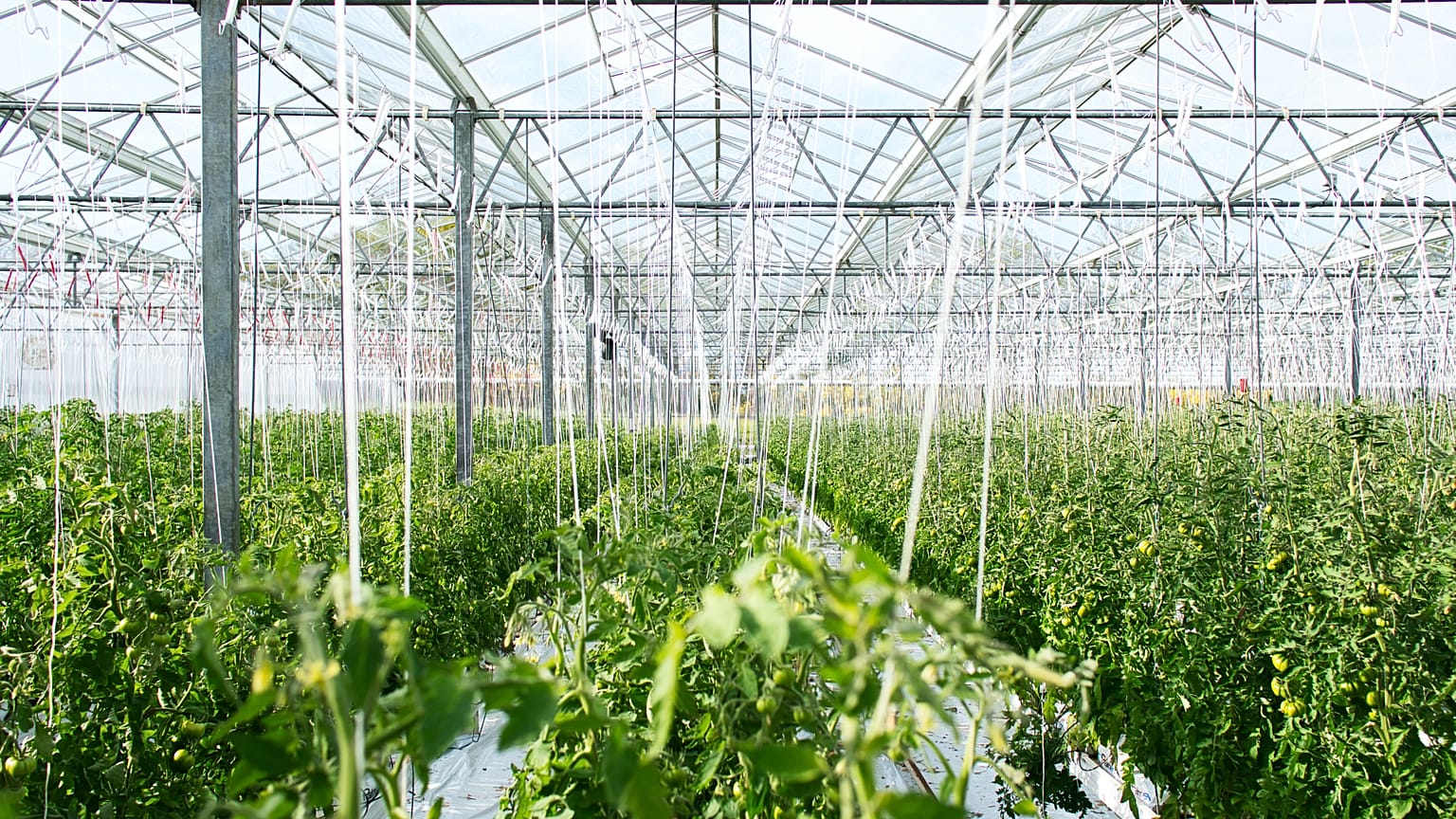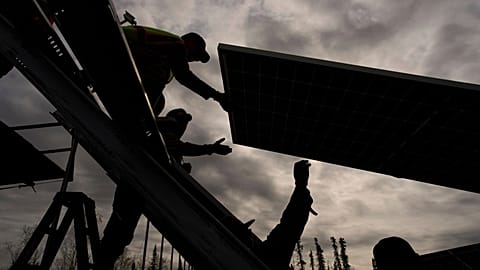Hydroponics uses just 10 per cent of the water needed for traditional cultivation.
Amid water scarcity and shrinking arable land, some smallholders in Egypt are switching to soilless farming.
The technique uses substrates like sand or foam, which significantly reduce the amount of water plants need.
It also cuts the amount of fertiliser needed, which is one of the most expensive agricultural inputs.
However, experts warn high startup costs and certain crop limitations could limit widespread use in the African nation.
What is soilless farming?
Soilless agriculture - also known as hydroponics - means growing plants using nutrient-rich water without soil and inside highly controlled greenhouses.
Soilless substrates such as sand, gravel, clay, foam or sponge are used to support plant roots.
In some cases, fish tanks are hooked up to the system in order to transfer nutritious animal waste to the plants.
A 2020 WWF report found that hydroponics uses only 10 per cent of the water needed for traditional cultivation. It also reduces deforestation and minimises the use of pesticides.
Soilless farming could be a lifeline in water-scarce areas
In Egypt, agritech startup Plug’n’Grow now offers a wide range of soilless agriculture solutions to growers.
“The soilless culture is a technique which allows us to produce high-quality crops in a very precise and well-controlled method,” explains the startup's head of product Nouran El Said.
“Hydroponics saves around 90 per cent of water used in traditional agriculture because it entails a closed system that does not allow for any water waste inside the soil,” explains El Said.
This is essential in a country facing water scarcity, and it also has economic benefits as it saves nearly 60 per cent of the fertilisers needed.
"For any grower, fertilisers are one of the most expensive agricultural inputs, especially since their prices have been on the rise for the last three or four years.”
Egypt is facing a water crisis
Plug’n’Grow is one of several agritech enterprises that have emerged in Egypt in recent years, promoting this form of agriculture.
According to the UN, Egypt is faced with an annual water deficit.
It's expected to be categorised as water scarce by 2025, due to climate change and a dam recently built by Ethiopia on one of the main tributaries of the River Nile, Egypt’s main source of fresh water.
Meanwhile, arable land, which constitutes less than 5 per cent of Egypt, has been shrinking due to urbanisation. The remaining 95 per cent is all desert.
“The most critical challenges facing the future of agriculture in Egypt are the shrinking of arable land, the saline nature of land and water shortage,” says Mona Zayed, professor of agriculture at Ain Shams University.
"This is very problematic because we need to increase our agricultural output in order to feed our population and generate more foreign currency revenues through agricultural exports. Soilless agriculture stands as a solution for this problem.”
Aside from its ecological benefits, hydroponics promises faster growth and a larger output.
“If we applied hydroponics to 10,000 feddans [0.042 km2], we could produce two million tonnes of vegetables, which would account for nearly half of Egypt’s agricultural exports and would generate nearly $1.2 billion [€1.1 billion],” says El Said.
“Meanwhile, the water saved could be directed to strategic crops, namely wheat. Hence, we would be able to achieve food security and generate more revenues from our agricultural products.”
Egypt is one of the world’s largest wheat importers, as bread remains the main staple for more than 70 million Egyptians.
In recent years, disruption of wheat supply chains related to Russia's full-scale invasion of Ukraine has exposed Egypt’s vulnerability to global shocks and exacerbated food insecurity.
Soilless farming is too expensive
Despite its advantages, hydroponics cannot be harnessed to cultivate strategic crops, Zayed says.
“It is not common to apply soilless agriculture solutions to crops like wheat, rice, barley, or corn,” she says.
“Hydroponics is only used to grow leafy greens and some simple vegetables. All greenhouses whether in Egypt or abroad are used for those purposes.”
Another challenge for soilless agriculture is its high startup costs. According to El Said, the starting capital of a commercial hydroponic farm stands at nearly EGP 3.5 million (over €100,000).
That said, “it helps avoid many problems that traditional agriculture comes with, such as soil-borne diseases, soil salinity, dehydration and high temperature,” according to Zayed.


















